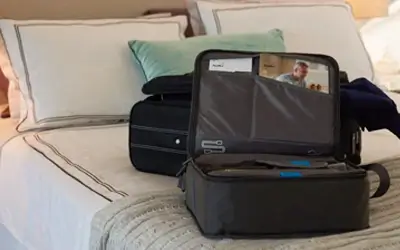The mask contains magnets that may interfere with certain implants or medical devices. Please refer to the Support documents for complete labeling information, including magnet contraindications and warnings.

Featuring an under-the-nose, ultra-compact cushion design, AirFit F30 helps prevent discomfort and facial markings on the nasal bridge.
The AirFit F30 is an ideal mask for patients who wear glasses to read or watch TV before bed.
The AirFit F30 features the same performant QuietAirTM vent as the AirFit F20 mask, gently diffusing exhaled air to minimise noise, helping to facilitate a more peaceful sleep for your patient and their bed partner.
You can achieve fast and effcicient fitting with just one frame, one headgear and two cushion sizes. This streamlined setup simplifies stock management and logistics.
Designed for an accurate first-time fit, it can help to reduce call backs and refits.
For additional therapy assistance.
Documents
Here are some links to help your patients get on the right track with the sleep therapy..

Access extra service and support by registering your ResMed product.

For further support, our free myAir program offers ongoing care and guidance via personalised therapy tips, coaching and advice.

If you have any questions regarding warranty information on our masks, please contact our local customer service team.
From diagnostics and healthcare informatics to therapy devices and masks, our solution can help you get a better night's rest. Crafted to offer both confidence and flexibility, our products allow for a high-quality therapy experience catered to your needs.
Our device, mask and accessory ranges, together with our online support program myAir™, enable you to easily customise your therapy experience to your preferences.